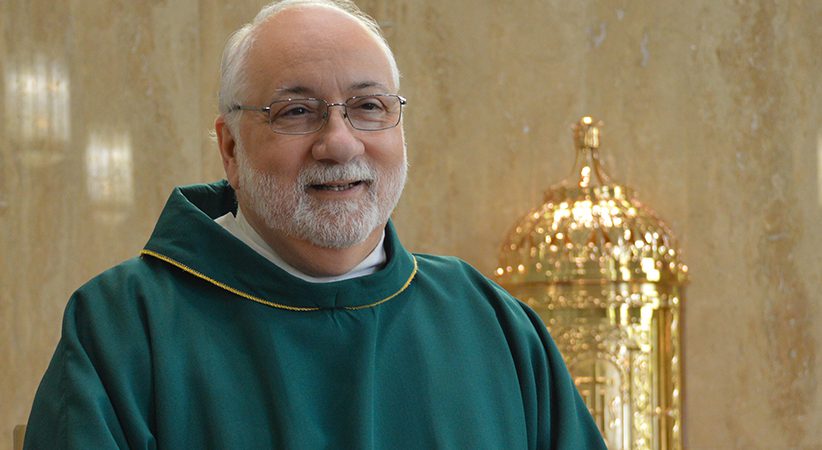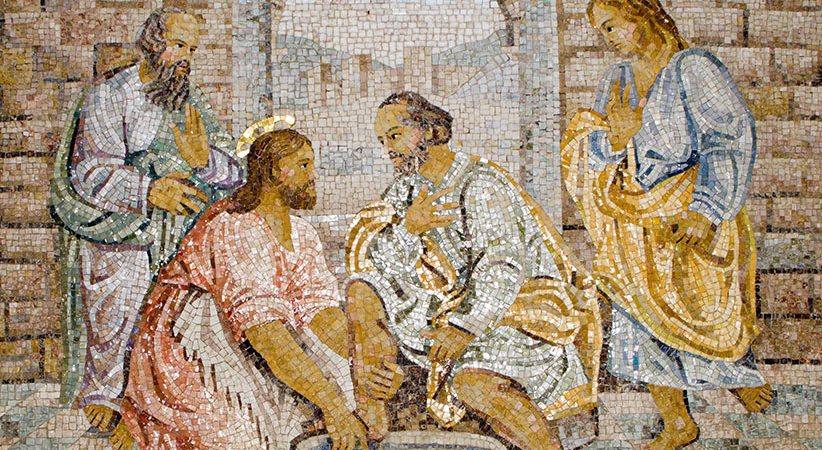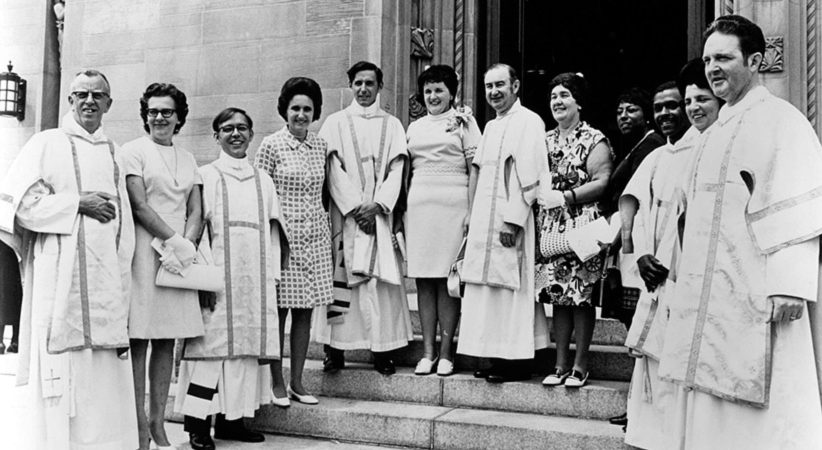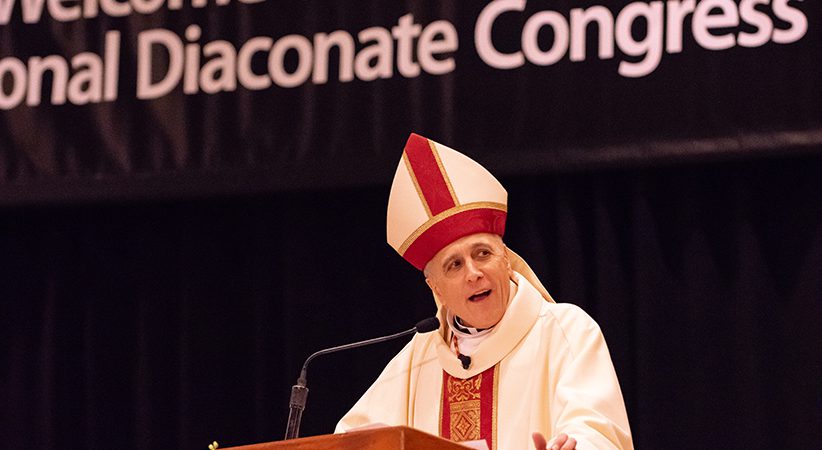‘A Concise Guide to Canon Law’
An easy-reading practical handbook for pastoral ministers
Deacon Matthew A. Glover Comments Off on ‘A Concise Guide to Canon Law’
Deacons in pastoral ministry should have “A Concise Guide to Canon Law” (Ave Maria Press, $17.95) on their bookshelves and at the ready. It is simple enough (and short enough) to be easily digested and understood by those not trained in canon law. But it is also rich enough to give deacons greater insight into why the Church’s laws are what they are.
This practical handbook has been in print for more than 20 years. Young and upcoming canonist Aldean Hendrickson has updated Kevin McKenna’s excellent original work. Hendrickson’s updates are not only for updating language, but also to incorporate Pope Francis’ more recent changes. A deacon in any kind of ministry needs to stay current on the basics of Church law and how it might impact his ministry. There are few canonical resources as relevant for deacons and as easily accessible as this updated text.
This book seamlessly intertwines the code with practical examples. Far from being cut-and-dried, this book’s practical examples touch on the lived experience of deacons in parishes, schools and dioceses.
Much could be said about the purpose of pastoral ministry (building the kingdom; preaching the Gospel; caring for the poor and marginalized). But regardless of one’s priorities, the one point on which we can all agree is we want to go to heaven. We all want to know, love and serve God in this life, so that we can be happy with him forever in the next. The ultimate purpose, therefore, is really the salvation of souls.
Conveniently enough, that’s also the supreme law of the Church: “the salvation of souls” (Canon 1752).
Canon law gets a bad rap as being too rigid, overly “legalistic,” inflexible to nuance or (perhaps most often heard by canonists) stifling to the movements of the Spirit. But the role of canon law isn’t to replace the fruits of the Spirit, nor to be the end-all, be-all of the Gospel message. The role of canon law is to make the Church’s efforts in these regards more effective.
Pope St. John Paul II knew this well. Though not himself a canonist, he instinctively understood the importance of right order in the Church’s mission. In promulgating the revised 1983 Code of Canon Law, he noted that canon law is not meant to be a “substitute for faith, grace, charisms, life of the Church and of the faithful.” Rather, he said the purpose of canon law was to “create such an order in the ecclesial society that, while assigning the primacy to love, grace and charisms, it at the same time renders their organic development easier” (Sacrae Disciplinae Leges).
Most canon lawyers are familiar with these words. And most canon lawyers wish that more deacons were aware of them. Not because we canonists seek to rule the Church, nor because we think canon law is the most important aspect of the Church’s life and ministry (well, most of us don’t think that). Rather, we canonists wish more deacons (and priests and pastoral ministers) appreciated that canon law, when done right, is really meant to help ministerial efforts, not hinder them.
“A Concise Guide to Canon Law” excellently highlights these practical ways in which canon law is at the service of pastoral ministry. Far from being a mere set of rules and regulations, canon law itself is really “applied theology.” This book shows how the Church’s theology, ministry and canon law intersect and support one another — all in furtherance of saving souls.
Structure and Content of Book
Each chapter of the book addresses a distinct topic. And each chapter is basically divided into two parts: (1) the basic canonical principles on that topic, and (2) FAQs regarding that topic.
For those less interested in the academic parts, you might consider just reading through the FAQs on each topic. Although it would be impossible to cover every scenario in the FAQs, these give a sense of the practical issues that pop up so routinely in parish and diocesan life. Depending on which FAQs you find most applicable, you could then dive into the underlying canonical principles outlined in the first part of the chapter.
The book itself is divided into two parts: Part I: Sacraments, and Part II: Church Life and Structures. There is no perfect way to divide and conquer the field of canon law, but for purposes of pastoral ministry these two parts probably make the most sense. These two aspects of canon law — sacraments and the Church’s life and structures — are the parts that most often come into play for those working directly in pastoral ministry, those with boots on the ground, as it were.
Part I: Sacraments
Part I on the sacraments is divided into eight chapters. The first deals with general canonical principles on the sacraments. The next seven obviously cover each of the sacraments, beginning with those of initiation (baptism, confirmation and the Eucharist); then moving to the sacraments of healing (penance and anointing of the sick); and concluding with the sacraments of service (holy orders and matrimony).
All deacons already know about the sacraments. And most deacons are already familiar with the basics of Church law concerning them. Where this book comes in most handy, however, are for the odd, quirky sacramental issues that routinely occur in parish life. Canonists who deal with these all the time might readily know the answers. But if a deacon doesn’t see them regularly, he may be befuddled by some of these issues.
Or, even worse, the deacon may not be experienced enough even to know an issue has arisen. That’s an area where this book can come in most handy: helping a deacon spot sacramental issues when they arise so that he at least knows the right questions that need to be asked and to whom they should be directed. This is where familiarizing oneself at least with the FAQs of this book can be of great help to a deacon’s ministry.

Part II: Church Life and Structures
Part II on Church life and structures contains seven chapters. The first three cover practical aspects of Church life that pastoral ministers regularly have to address: declarations of nullity (annulments), funerals and the Liturgy of the Hours. The next three chapters deal with practical aspects of Church structure: the parish church, the diocesan church and temporal goods (or property). The final chapter then covers rights and obligations in the Church.
Part II’s organization is somewhat puzzling. The Code of Canon Law itself begins with the general norms (rules) that apply across the board, and shortly thereafter discusses the obligations and rights of persons in the Church.
The code begins with these topics because many other things in the code flow from or are connected to them. These starting principles are essential for understanding what follows. Without an understanding of fundamental obligations and rights and how the Church is structured, one is hard-pressed to understand norms on other matters (such as declarations of nullity or temporal goods).
However, although the internal organization of Part II may be quizzical to a canonist, it likely makes practical sense for those in diaconal ministry. After all, declarations of nullity (annulments) are one of the more hotly contested and complained about areas of Church life. And funerals create issues both pastoral and practical, which are only exacerbated by the fact that they naturally arise during times of trauma.
The chapter on the Liturgy of the Hours is short and to the point. Given that Liturgy of the Hours is not a typical part of parish life, one wonders about its inclusion in a practical handbook for pastoral ministers. Still, insofar as the Liturgy of the Hours is intended to be the prayer of the entire Church (not just for clergy and religious), perhaps it is fitting that it be kept in the forefront of the minds of all pastoral ministers. Deacons, however, will certainly find this chapter useful.
The book then turns to two areas that some deacons may consider to be “necessary evils”: the hierarchical structuring of parishes and dioceses. The chapter on parishes outlines canonical principles dealing with pastors, parochial vicars (or “associate pastors”), and pastoral and finance councils. Its FAQs give concise guidance on some difficult realities that often face parishes and parish staff: the closing of parishes, deacons and laity administering parishes, and the contentious removal of pastors. Deacons who regularly deal with structural issues or political dynamics within a parish would be well served to study this chapter.
The chapter on dioceses mirrors the book’s approach on parishes. It begins with a summary of the canonical principles on the diocesan bishop, and then turns to the diocesan synod, the diocesan curia (or diocesan departments), the vicar general, episcopal vicars, the chancellor, the finance officer, finance council, presbyteral council and college of consultors. The FAQs then address various aspects of the diocesan synod, the requirement of a finance council, the option of a pastoral council, the diocesan budget and the requisite consultation of the presbyteral council by a diocesan bishop.
The next chapter is on temporal goods — the Church’s version of property and contracts law. Deacons in parish ministry will be particularly intrigued by its FAQs, which address three hot-button questions in many parishes: (i) whether a pastor may dispose of real property at any time; (ii) whether a pastor is restricted on what financial acts he can perform; and (iii) whether canon law also applies to contracts covered by civil law. Property-law nerds (this author included) will be intrigued by its succinct and big-picture overview of various principles of law on temporal goods: acquisition, administration, responsibilities of administrators, and contracts and alienation (transfer of ownership).
The final chapter deals with fundamental rights and obligations in the Church. I often hear deacons ask about “their rights,” but it is essential to recall that rights also have corresponding obligations. Moreover, our rights in the Church are rarely individual — they are almost always intertwined with one another, as we are one Body in Christ. Deacons would benefit from reviewing this chapter’s easy-to-understand bullet points of rights and obligations, not only for themselves but for the faithful whom they serve.
The book concludes with three very useful glossaries: definitions of terms, a very brief history of canon law and suggested readings. Deacons may not be interested in all three glossaries, but reviewing the definitions of terms will make for easier reading of this text.
In conclusion, “A Concise Guide to Canon Law” should be a staple for most deacons in the exercise of their own pastoral ministry. The FAQs provide practical answers to reoccurring issues. And the canonical discussion makes for easy reading — or as easy as canonical reading can get.
DEACON MATTHEW A. GLOVER is the chancellor for canonical affairs and general in-house counsel for the Diocese of Little Rock, Arkansas.





